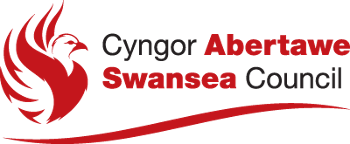Protected sites in Swansea
'Protected sites' are areas of land or sea (or sometimes both) that are protected for the environment.
Some sites are protected by law (statutory) while others are not (non-statutory), and some are designated for their importance to nature conservation at a national or international level while others are designated for their importance at the local level.
Regardless of these differences, all protected sites are key in providing a network for nature across Swansea and beyond the county border.
Statutory protected sites
These are sites which are protected by a certain law or laws. We have examples of all types of statutory protected sites in Swansea which cover around 21% of Swansea'a land area (opens new window), including:
Sites of Special Scientific Interest (opens new window) (SSSI) - These represent some of the best examples of nature at a national level. They can be designated for biological (e.g., plants or animals) and/or geological (e.g., rocks and/or landforms) features. In Swansea we have 36 SSSIs.
Special Protection Areas (opens new window) (SPA) - These are sites of European importance designated to protect the habitat of migratory birds and other endangered bird species. In Swansea we have two SPAs.
Special Areas of Conservation (opens new window) (SAC) - These are designated to protect certain habitats and/or species that are of particular importance at a European level. In Swansea we have seven SACs.
Ramsar Sites (opens new window) - These are wetland sites of international importance. In Swansea we have two Ramsar sites.
National Nature Reserves (opens new window) (NNR) - Are sites that are established to conserve and to allow people to study wildlife, habitats, or geological features of special interest. Today, most of our nature reserves are open to everyone to explore, to learn about and to enjoy. In Swansea we have four NNRs.
Local Nature Reserves (LNR) - Are sites designated for nature that is important at the local level. They are also important places for people to experience and learn about nature.
Of all the sites protected by law, Swansea Council is responsible for designating the LNRs, and to date the council has designated six sites in the county as LNRs, which cover a range of habitats including woodland, heath, coastal cliffs, and marsh. These sites are an important component of Swansea's ecological network, but unlike other sites protected by law, LNRs are designated specifically for people and wildlife. So, as well as being key sites for nature conservation, the six LNRs in Swansea are a local resource for environmental education and give people the opportunity to learn about or simply enjoy nature.
- Cwmllwyd Wood Local Nature Reserve
- Killay Marsh Local Nature Reserve
- Mumbles Hill Local Nature Reserve
- Pwll Du Local Nature Reserve
- Cadle Heath Local Nature Reserve
- Bishop's Wood Local Nature Reserve
To find out more about LNRs, email nature.conservation@swansea.gov.uk.
Non-statutory protected sites
These are sites which are not protected by law, but they have some protection from development through local planning policy, as their designation raises awareness and intends that nature is given due consideration in the land use planning system. These sites have a number of different names in the UK, but in Swansea they are called Sites of Importance for Nature Conservation (SINCs). SINCs are often designated by the local authority and in Swansea there are 154 SINCs currently designated which covers around 22% of Swansea land area (opens new window), including a variety of habitats and species. These sites were chosen in accordance with national guidance on identification and selection of SINCs.
SINCs are a vital component of nature in Swansea. They are designated for their importance to nature locally, as well as for some particularly special habitats and species, known as Section 7 habitats and species (opens new window). The ecological network SINCs form across the county is of huge importance to nature conservation, in addition to the network of designated sites in Swansea that are protected by law.
To find out more about SINCs, email nature.conservation@swansea.gov.uk.
